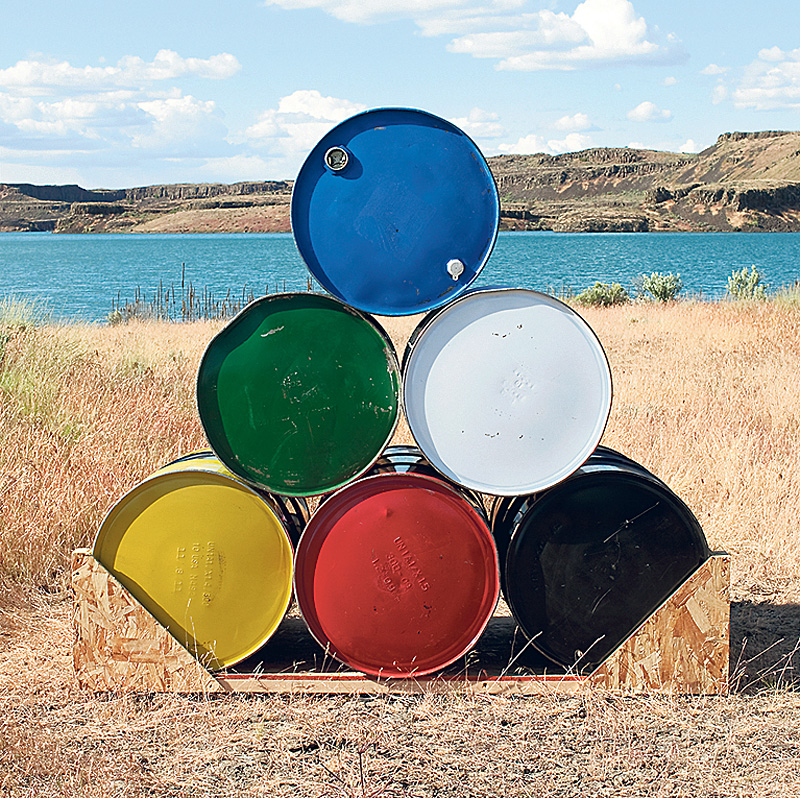It’s no surprise that Chris Engman lives in a SoDo studio accessed by four steep flights of creaky wooden stairs. “I like schlepping,” he says.
To create his austere, compelling photos, he often drives a truck bed of cinder blocks, cheap lumber, 55-gallon oil drums, and other iterative detritus to barren, unbeautiful locales, such as Grant and Lincoln Counties in Washington’s dry center. There he erects temporary piles, stacks, and other edifices, sometimes retaking shots previously made at the same site.
“What I’m trying to do is capture moments,” says the soft-spoken Bellingham native, a longtime member of the SOIL cooperative. “To be sensitive to time passing.”
His shots are precisely planned and frequently involve exact calculations of the sun’s position in the sky, its progress across the horizon, and the shadows cast by his fleeting installations. A century ago, this planning would’ve involved a sextant. Now Engman uses a laptop and astronomy websites to plan his photographic tours. “I have charts and a rigorous schedule,” he says. “The sun is inflexible. It’s a race.”
One such race took him into the Nevada desert. Alone on a barely passable road—feeling, he says, “like I was gonna die out there and be eaten by wolves”—his truck broke down. So, nowhere near his intended destination, he decided, “This place is perfect!” Engman set up camp in the dark and, illuminated by the moon and his Toyota’s headlights, commenced arranging the pile of cinder blocks.
The result is Inversion, one of several diptychs included in a November show of his recent work at Greg Kucera Gallery. The two panels appear at first glance to be identical. But they’re not. After the first shot, Engman spent hours rearranging the cinder-block pile, flipping it along the vertical axis. The second image was then taken at the solar “twin point” of the first, so the shadows would match. The effect, when you study and apprehend it long enough, is very much like a sundial—or the temples of the Mayas, which is no coincidence. As Engman says, “I love that stuff. Tikal—it blew me away.”
Like any good starving artist (one who drives a Metro bus part-time), Engman has no paid assistants on the majority of his shoots. And solitary manual labor is part of the artistic process. “I think they’re performances. They’re about action.”
No kidding. Engman’s Variations, for instance, captures 120 different arrangements of six differently painted oil drums. They’re stacked in a 3-2-1 pyramid by a small lake, with the patterns shifting in each shot, each taken 10 minutes apart over two days. But only the final effect is seen—the arduous action remains unrecorded. Nor do we see the entropy that Engman’s assemblages resist, the point of failure or gradual erosion. He explains, “The art is what happens in between. It’s in here”—he points to the white space dividing two photos taken precisely 24 hours apart—”and that’s true of all the diptychs. It’s about what you infer about the process.”
In two other diptychs, that process involves moving and reassembling a gravel pile and a stack of split logs. Within each pair there’s a subtle progression toward decay. Something is altered or degraded. “It’s the same,” says Engman, “but it’s built differently—as a metaphor for, I don’t know, endeavors?”








